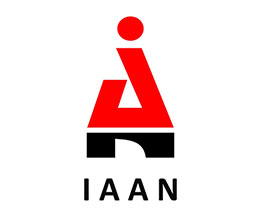
The Role of AI in Journalism and Writing: Transformation, Challenges, and the Future
Artificial Intelligence (AI) is rapidly reshaping the landscape of journalism and writing, offering new possibilities while raising important questions about authenticity, ethics, and creativity. While AI has proven effective in automating routine content creation, its role remains complementary rather than a replacement for human journalists and writers. Educational institutions like IAAN School of Mass Communication are preparing future media professionals to navigate this evolving space, equipping them with the knowledge to integrate AI responsibly into their work.
AI and the Future of Journalism
AI has already begun to transform journalism by automating data-driven reporting, sports recaps, weather updates, and financial summaries. News agencies use AI-powered tools to generate quick reports, analyze large datasets, and even assist in fact-checking. However, investigative journalism, ethical decision-making, and in-depth analysis still require human judgment, emotional intelligence, and critical thinking—areas where AI falls short.
At IAAN School of Mass Communication, journalism students are trained to use AI effectively while maintaining journalistic integrity. They learn how AI can enhance reporting by assisting in research, detecting misinformation, and generating preliminary news drafts. However, the emphasis remains on ethical storytelling and the human role in journalism, ensuring that AI serves as a support system rather than a replacement for reporters.
AI’s Impact on Writers and Content Creators
Beyond journalism, AI is influencing the broader field of writing, including content marketing, creative writing, and academic research. Writers now have access to AI-powered tools that improve grammar, style, and readability while assisting in research and content generation. However, while AI enhances productivity, it cannot replace human creativity, intuition, and originality.
AI’s role in writing includes:
- Automating Routine Tasks: AI can generate product descriptions, social media captions, and basic reports, allowing writers to focus on higher-level creative tasks.
- Enhancing Research and Editing: AI tools like Grammarly and Hemingway help refine language and improve clarity.
- Boosting Creativity: AI can suggest ideas, provide writing prompts, and assist in brainstorming sessions.
- Personalizing Content: AI analyzes reader engagement patterns, allowing writers to tailor their content to specific audiences.
However, challenges remain. AI-generated content raises ethical concerns regarding authenticity, bias, and originality. Writers must ensure that AI remains a tool rather than a substitute for human creativity and critical thinking.
The Future of AI in Journalism and Writing
As AI continues to advance, its role in journalism and writing will expand. However, it is crucial to strike a balance between leveraging AI’s efficiency and preserving the human touch in storytelling. Institutions like IAAN School of Mass Communication play a pivotal role in educating future journalists and writers about AI’s capabilities and limitations. By incorporating AI into their curriculum, they ensure that students are equipped to use AI responsibly, enhancing their work without compromising ethical standards.
Ultimately, AI is not here to replace journalists and writers but to assist them. The future of media and storytelling lies in a collaborative approach, where human creativity, ethical judgment, and AI-powered efficiency work together to produce high-quality, engaging, and responsible content.



